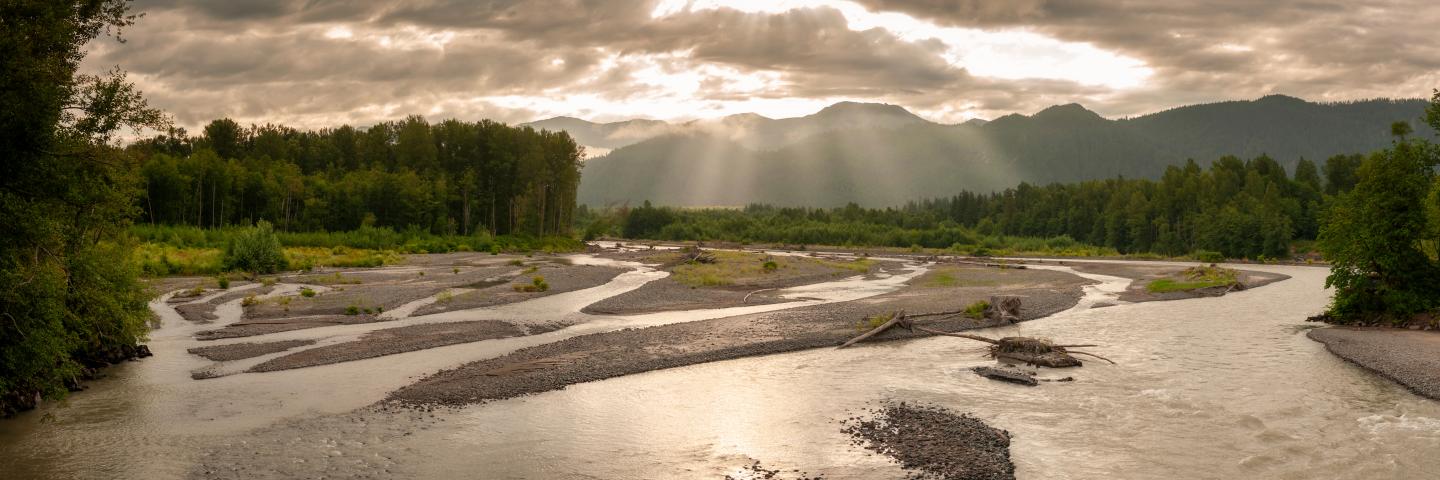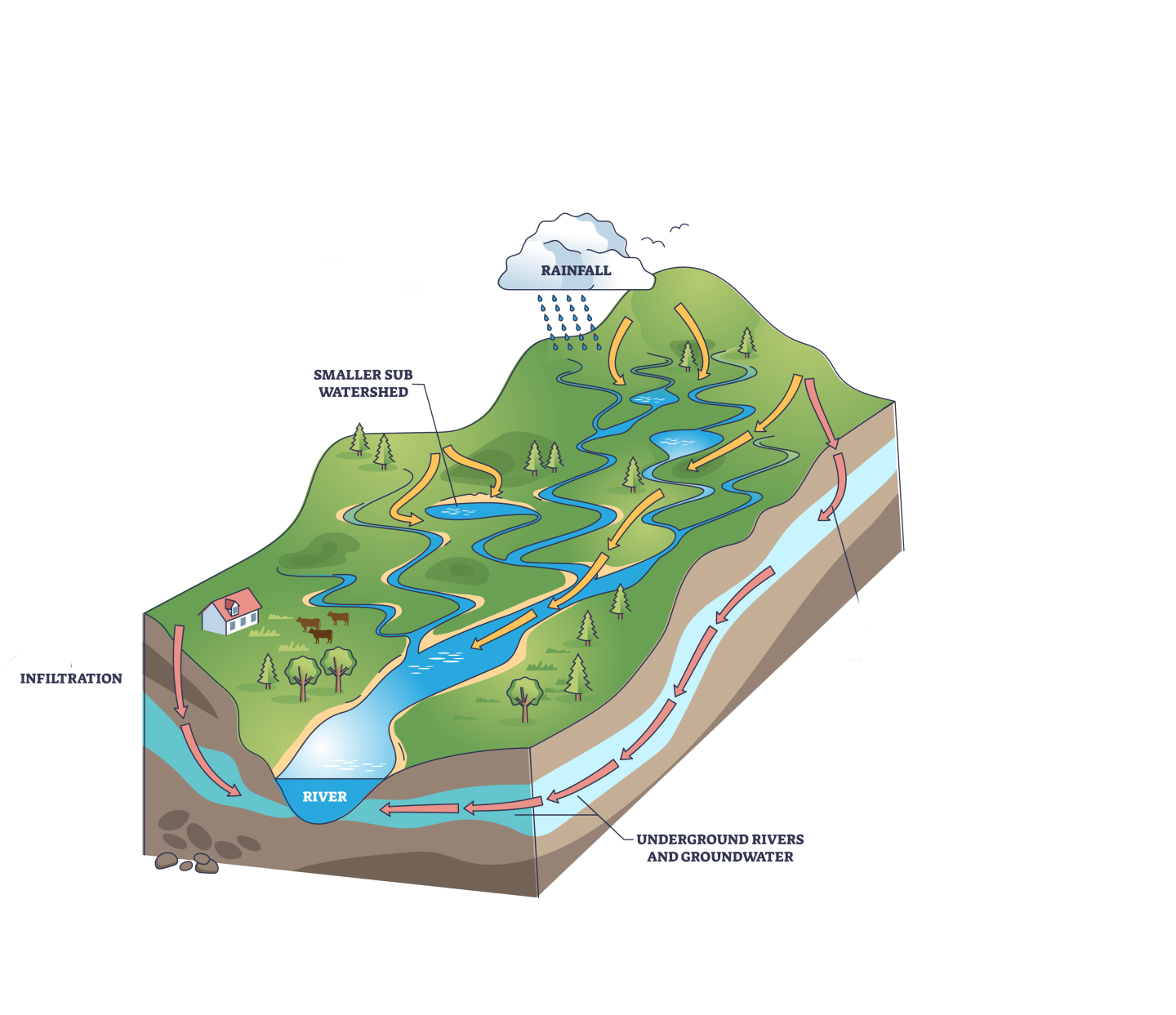Watershed Blog
Watershed Awareness - it's all right here

Watersheds impact everyone; every community, farm, ranch, and forest. They provide a vital resource for all living things to survive and thrive. All watersheds are interconnected, creating a land-water system that conveys water to its final destination such as a river, lake, wetland, or estuary.
Use of good land management practices contribute to watershed health. Implementing NRCS conservation methods on working lands and employing preservation techniques in watersheds help prevent erosion, restore infrastructure, improve water and air quality, increase water filtration, enhance wildlife habitat, and provide other natural resource benefits. Working together, NRCS, land managers, ag producers, and communities help to build resilience to drought and floods while improving water supply.

Rain and snow fall into watersheds that are ecosystems themselves. A healthy watershed naturally filters and stores water, prevents flooding and impedes wildfires, and conserves habitat.
NRCS has assisted communities with conservation in watersheds since the 1930s when the agency was born amid the Dust Bowl. NRCS provides technical and financial assistance to help farmers, ranchers, and forest landowners address natural resource concerns. NRCS also helps communities to build-in infrastructure practices that prevent future flooding, save lives and protect property. These efforts from the headwaters of the Mississippi to the Gulf of Mexico, and from the Atlantic to the Pacific, address each area's unique concerns and demands. Conservation practices include:
Shed light on your local watershed. Use the interactive map below to find your local water source and discover where your water comes from and follow the path it takes from the source to the reservoir. When it rains, where does the water go, where does it flow? Every region has a local watershed conservation district/organization. Connect with your local soil and watershed conservation district and NRCS to learn more.
NRCS Watershed Programs provides technical and financial assistance to local government agencies, tribal organizations and other eligible sponsors, to help communities implement conservation practices that address watershed resource concerns. Watershed Programs provides watershed conservation assistance through the Emergency Watershed Protection (EWP) Program, the Watershed and Flood Prevention (WFPO) Program and the Watershed Rehabilitation (REHAB) Program — each program, has a specific area-of-focus as defined below: